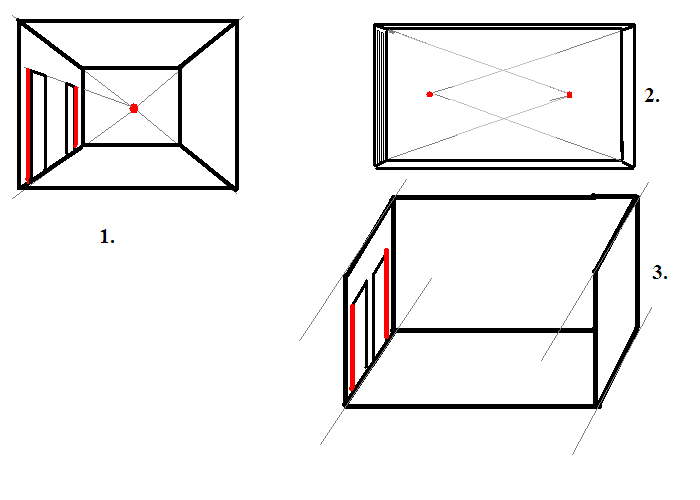So there was I, loosely thinking about that Deluxe verison of discordance's "How they found silence" that we're going to make, with Piotr Obinsky.
To be really into what I was doing, I decided to play the game again, and this time I played it with my girlfriend, to know her opinion.
She actually had the mouse and I was barely guiding her.
The game's interface is super simple: Left-click = use, right-click = watch. The exits of each room are marked with big arrows drawn on the background. You don't even have to click on the actual exit of the room, just click on the arrow.
Also, there is strictly no perspective. The game is enirely in completely flat 2D. You exit rooms either to the left or to the right, or by clicking on the doors drawn in the background.
So you couldn't design something more straightforward.
And, to my great surprise...
...My girlfriend couldn't find her way in the game. She was always failing to spot WHERE she was, and was often clicking randomly to go from one room to another. She was confusing the rooms, not remembering what door she just took, etc.
And it's not like she's dumb, she's very close to finish Machinarium. Also, she actually WAS enjoying the game. She was immersed in the plot, but she was highly frustrated by the game design/graphics.
I think this is very interesting from a scientific perspective. It deals with the following topics:
- how does the brain match an imaginary scene to a real place? I was very aware that most of the places are at the top of the cliffs, even when they're not explicitely drawn. However, my girlfriend told me she felt like she was only walking along a random garden wall.
- the difference between the geometric representation of space by boys and a representation based on remarkable "hotspots" by girls. There, the graphics were so basic that the geometrical aspect took over, despite the many details (lamps, doors, flowers, etc.)!
And, from a game designer's perspective: Always think your design choices through, depending on your intended audience! It's lucky discordance made his game for a handful of nerdy guys (just kidding )
)
To be really into what I was doing, I decided to play the game again, and this time I played it with my girlfriend, to know her opinion.
She actually had the mouse and I was barely guiding her.
The game's interface is super simple: Left-click = use, right-click = watch. The exits of each room are marked with big arrows drawn on the background. You don't even have to click on the actual exit of the room, just click on the arrow.
Also, there is strictly no perspective. The game is enirely in completely flat 2D. You exit rooms either to the left or to the right, or by clicking on the doors drawn in the background.
So you couldn't design something more straightforward.
And, to my great surprise...
...My girlfriend couldn't find her way in the game. She was always failing to spot WHERE she was, and was often clicking randomly to go from one room to another. She was confusing the rooms, not remembering what door she just took, etc.
And it's not like she's dumb, she's very close to finish Machinarium. Also, she actually WAS enjoying the game. She was immersed in the plot, but she was highly frustrated by the game design/graphics.
I think this is very interesting from a scientific perspective. It deals with the following topics:
- how does the brain match an imaginary scene to a real place? I was very aware that most of the places are at the top of the cliffs, even when they're not explicitely drawn. However, my girlfriend told me she felt like she was only walking along a random garden wall.
- the difference between the geometric representation of space by boys and a representation based on remarkable "hotspots" by girls. There, the graphics were so basic that the geometrical aspect took over, despite the many details (lamps, doors, flowers, etc.)!
And, from a game designer's perspective: Always think your design choices through, depending on your intended audience! It's lucky discordance made his game for a handful of nerdy guys (just kidding
 )
)







